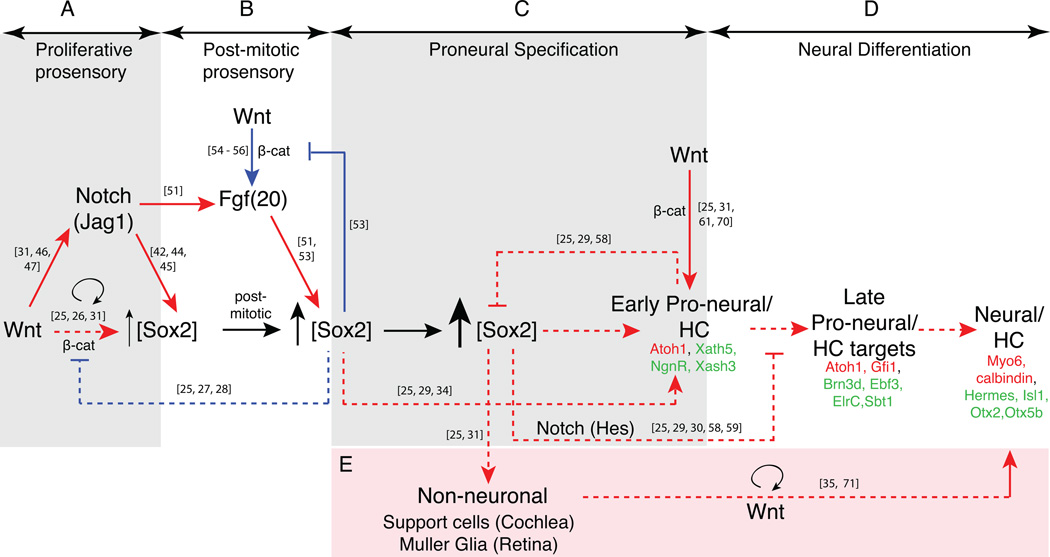Figure 2.
A model of a developmental timeline with intersecting Wnt, Notch and FGF pathways in the vertebrate cochlea is compared and contrasted with vertebrate retina. Wnt signaling, together with Notch, stimulates proliferation and low-level Sox2 expression during the proliferative prosensory phase of development (A). Wnt signaling can stimulate FGF-mediated elevation of Sox2 levels in post-mitotic prosensory cells (B). We speculate that intermediate Sox2 levels will induce proneural expression, whereas the highest levels of Sox2 will push cells to adopt a non-neuronal fate (C) and will block neural differentiation via Notch signaling (D). Wnt signaling also can reprogram non-neuronal cells to proliferate and adopt neural fates (E). Pathways represented with a red line denote signaling pathways in the mouse cochlea/ chick inner ear. Pathways represented with a dashed line denote signaling in Xenopus/ mouse retina, while blue lines denote pathways from other biological systems (see text for details). Hair cell genes and retinal genes are colored in red and green, respectively.

